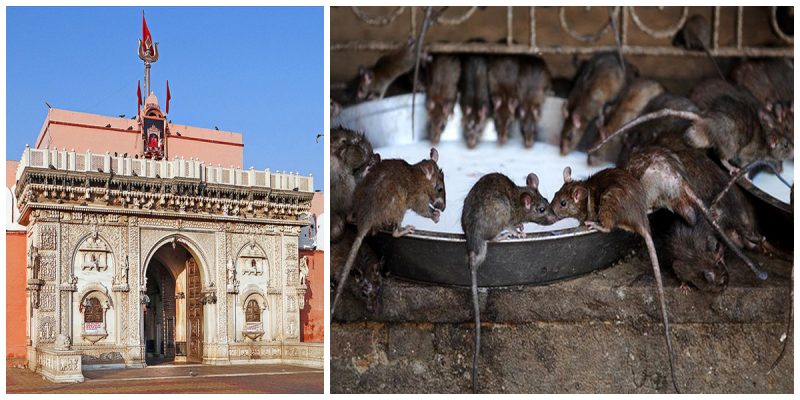Karni Mata Temple is a famous Hingu Temple which has around twenty thousand rats in residence, called kabbas, and many people travel great distances to pay their respect. Located in the small town of Deshnoke, near Bikaner in Rajasthan, the temple is dedicated to Karni Mata, a female Hindu sage, born in the Charan castle. She is an official deity of the royal family of Jodhpur and Bikaner and was worshiped as the incarnation of the goddess Durga.
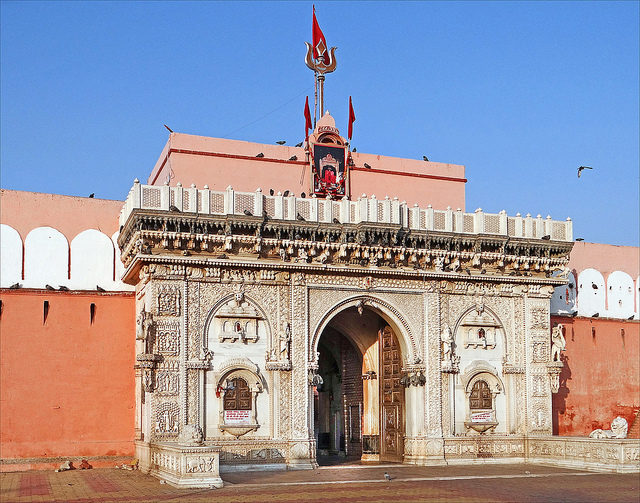
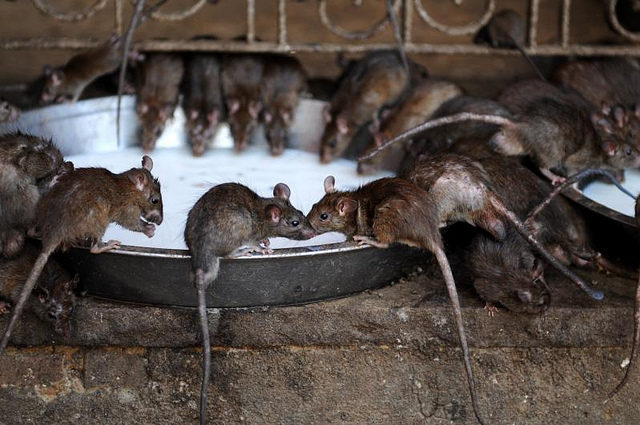
According to the legend, Laxman, Karni Mata’s stepson (or the son of one of her storytellers), drowned in a pond in Kapil Sarovar in Kolayat Tehsil while he was attempting to drink from it. Karni Mata implored Yama, the god of death, to revive him. First refusing, Yama eventually relented, permitting Laxman and all of Karni Mata’s male children to be reincarnated as rats.
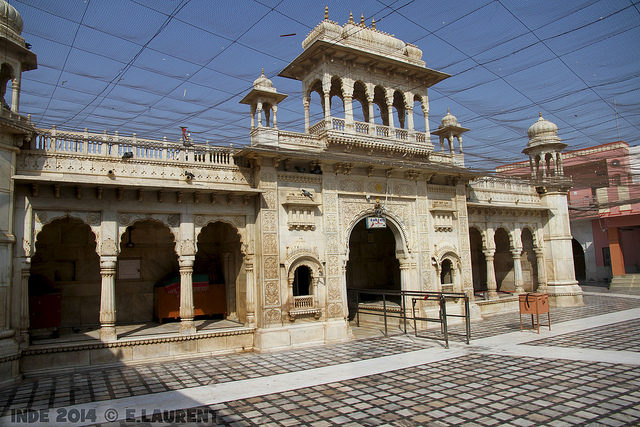
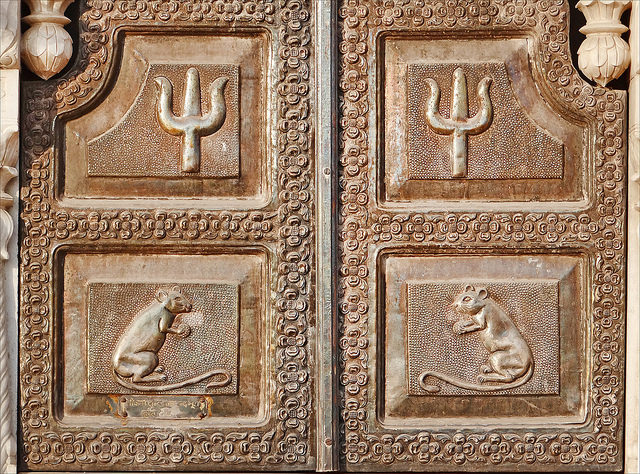
There are a lot of devotees who work in the temple. They work in shifts based on the lunar cycle and some families even live in the temple, taking care of the rats and the temple.
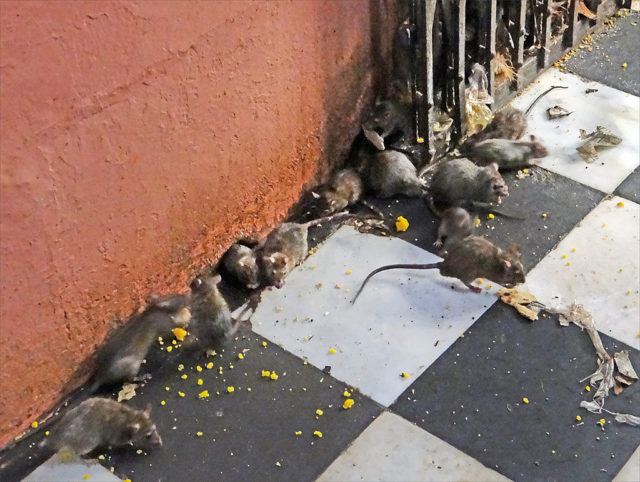
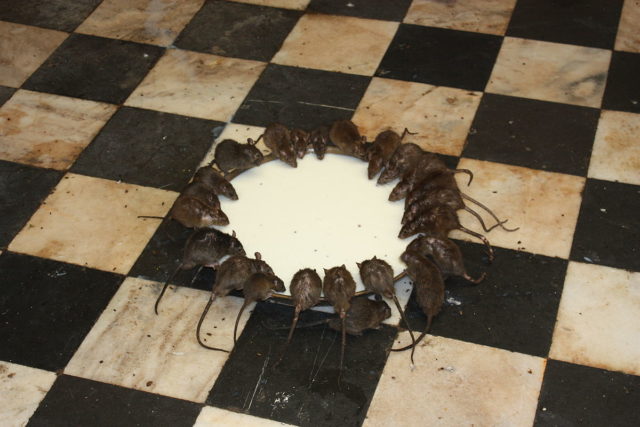
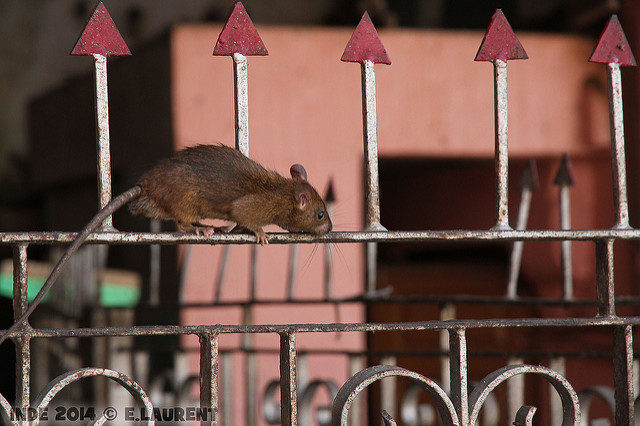
The only way to get inside is barefoot because these animals are sacred. Visitors can give them milk and treats and if they accidentally kill one of them they have to replace it with another made of gold.
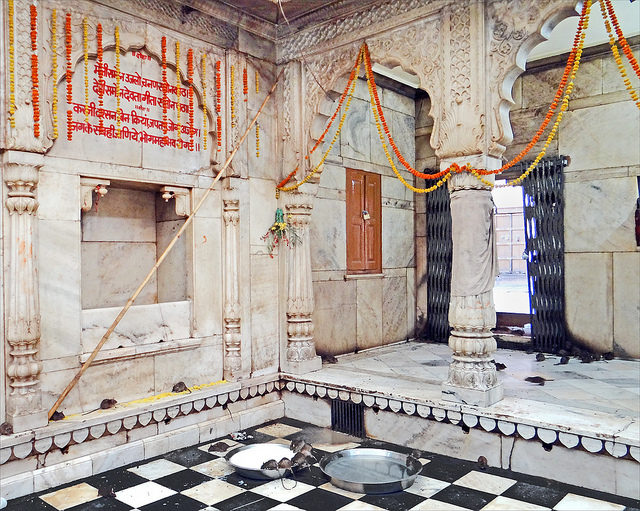
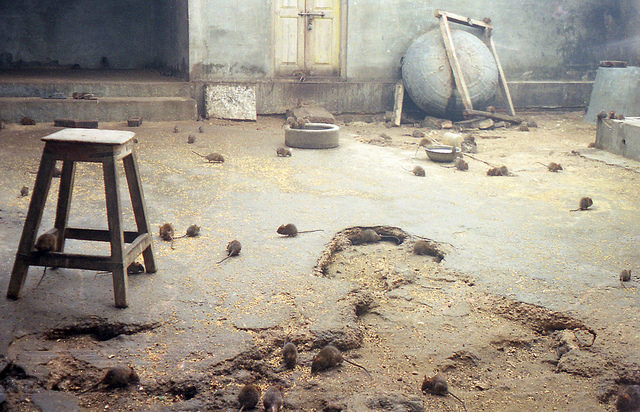
The temple is famous for the approximately 20,000 black rats that live in the temple. It is considered lucky to spot a white rat because they are especially holly. Sighting them is a special blessing and visitors put a lot of efforts to bring them forth by offering prasadam or vibuti which is a holy food; like dust, given from the gods.
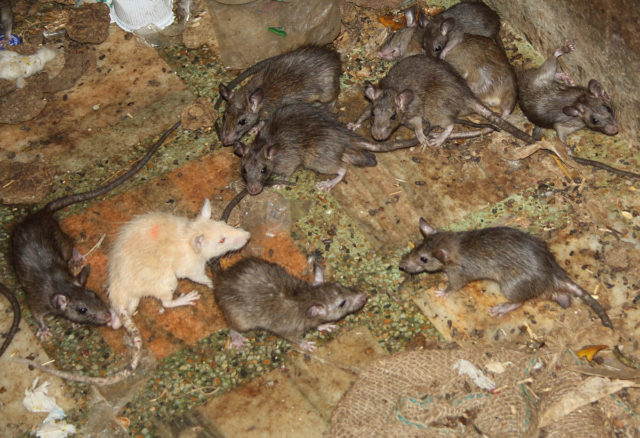
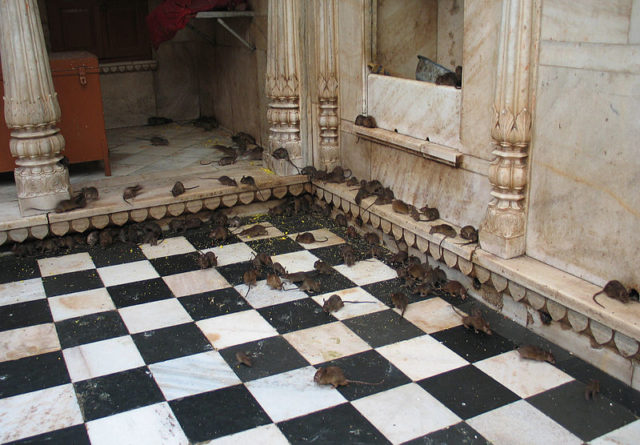
Visitors come late at night or before sunrise at 4:00 a.m. At this time, the rats are out in full force, gathering food. There are two kinds of offerings made by the devotees: the ‘dwar-bhent’ is attributed to the priests and the workers, while the ‘kalash-bhent’ is utilized for the temple maintenance and development.
